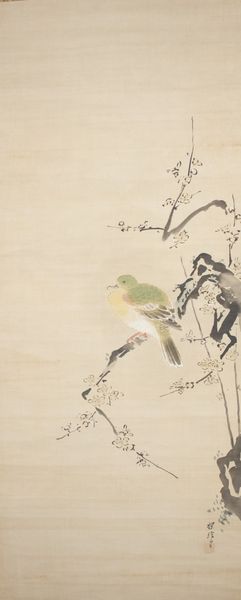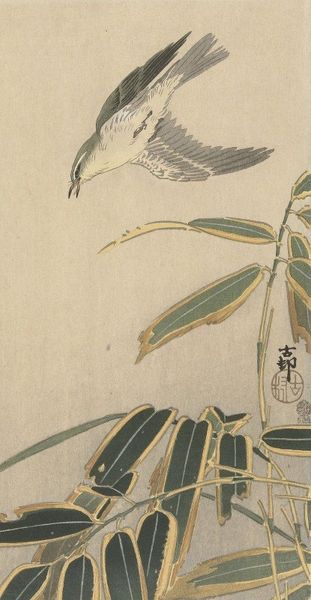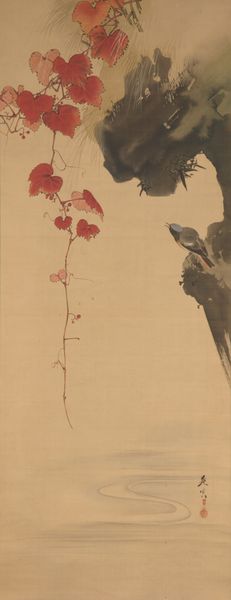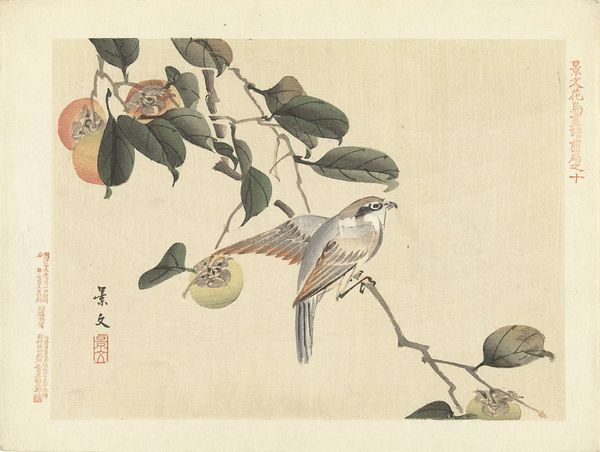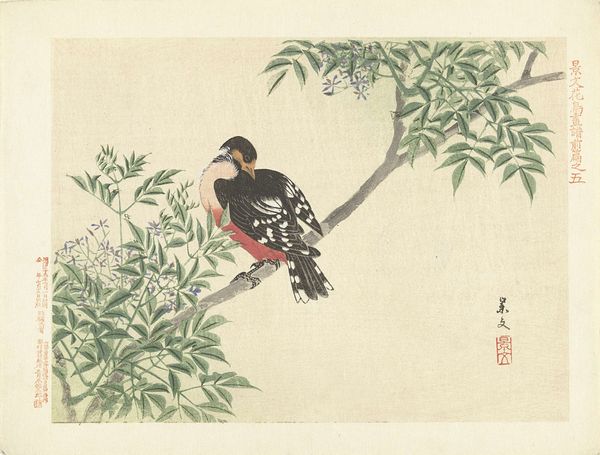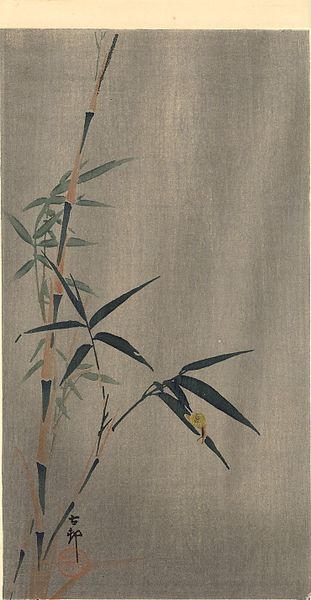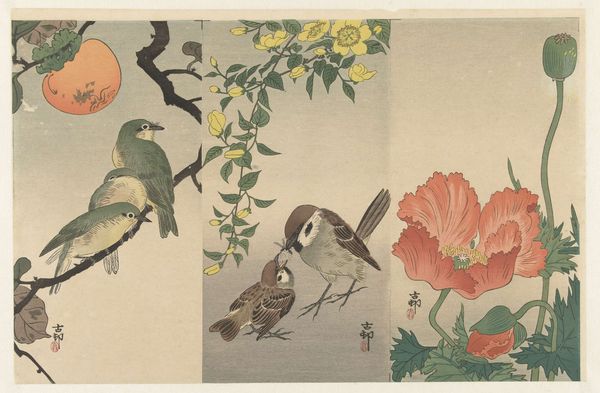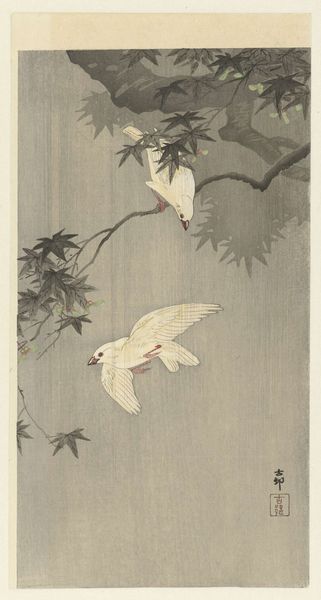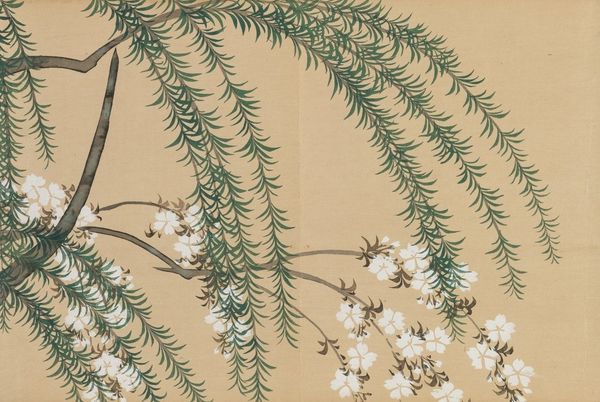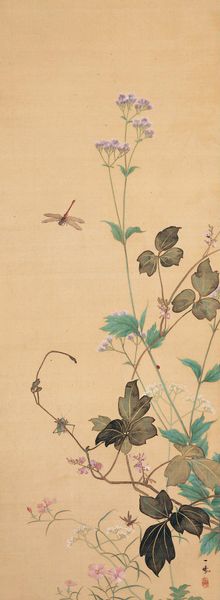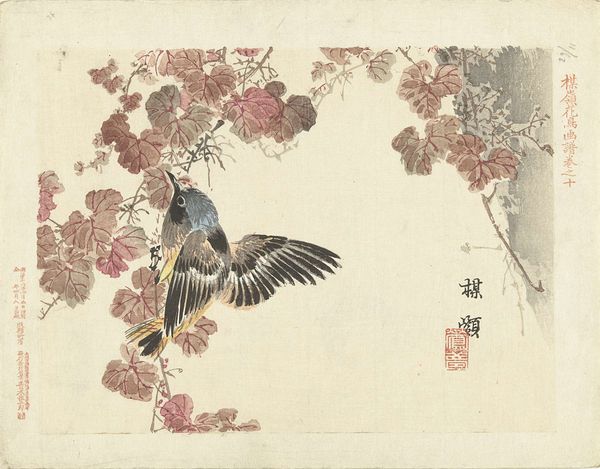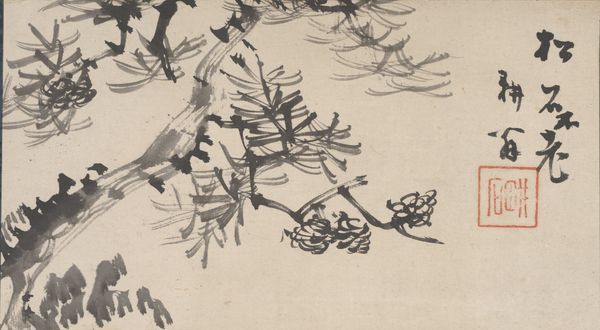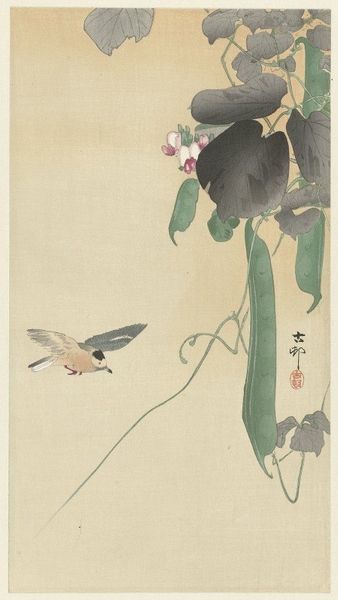
painting, watercolor
#
painting
#
asian-art
#
landscape
#
watercolor
Copyright: Public Domain: Artvee
Editor: Here we have Kamisaka Sekka's "Bamboo in Snow," a watercolor painting from 1909-1910. There's a quiet stillness to it. What do you see in this piece, looking at it as a whole? Curator: I see the resilience of nature conveyed through symbolic imagery. Bamboo, even in snow, suggests strength, flexibility, and endurance. Consider the symbolism embedded within Asian art—bamboo often represents uprightness and integrity, even in adversity. And what about the bird? Editor: It looks like a sparrow, tucked near the bamboo. It almost seems to be seeking shelter. Curator: Precisely. The sparrow in winter also carries significance. Birds in art often symbolize the soul, or freedom. Paired with bamboo in a snowy landscape, it evokes the ability to endure hardship and find peace, or perhaps a place of safety. Think about what the color green represents, often life, renewal and growth in stark contrast to the death usually symbolised by snow and winter. Is it possible the viewer can consider this work as an allegory for something else? Editor: Maybe... resilience of the human spirit despite hard times? Curator: Exactly! And note the way the artist has stylized the image – not photorealistic, but more evocative. In doing so, Sekka invites contemplation not only of the scene, but of the deeper meaning suggested through its symbolism. What did you observe about it that surprised you most? Editor: I guess I hadn't considered how much symbolism was embedded in what I initially saw as just a simple scene! Curator: Precisely. And this understanding encourages me to think deeply of Japanese memory during a time of intense transition and modernisation. Art allows such vital dialogue between culture and history.
Comments
No comments
Be the first to comment and join the conversation on the ultimate creative platform.
